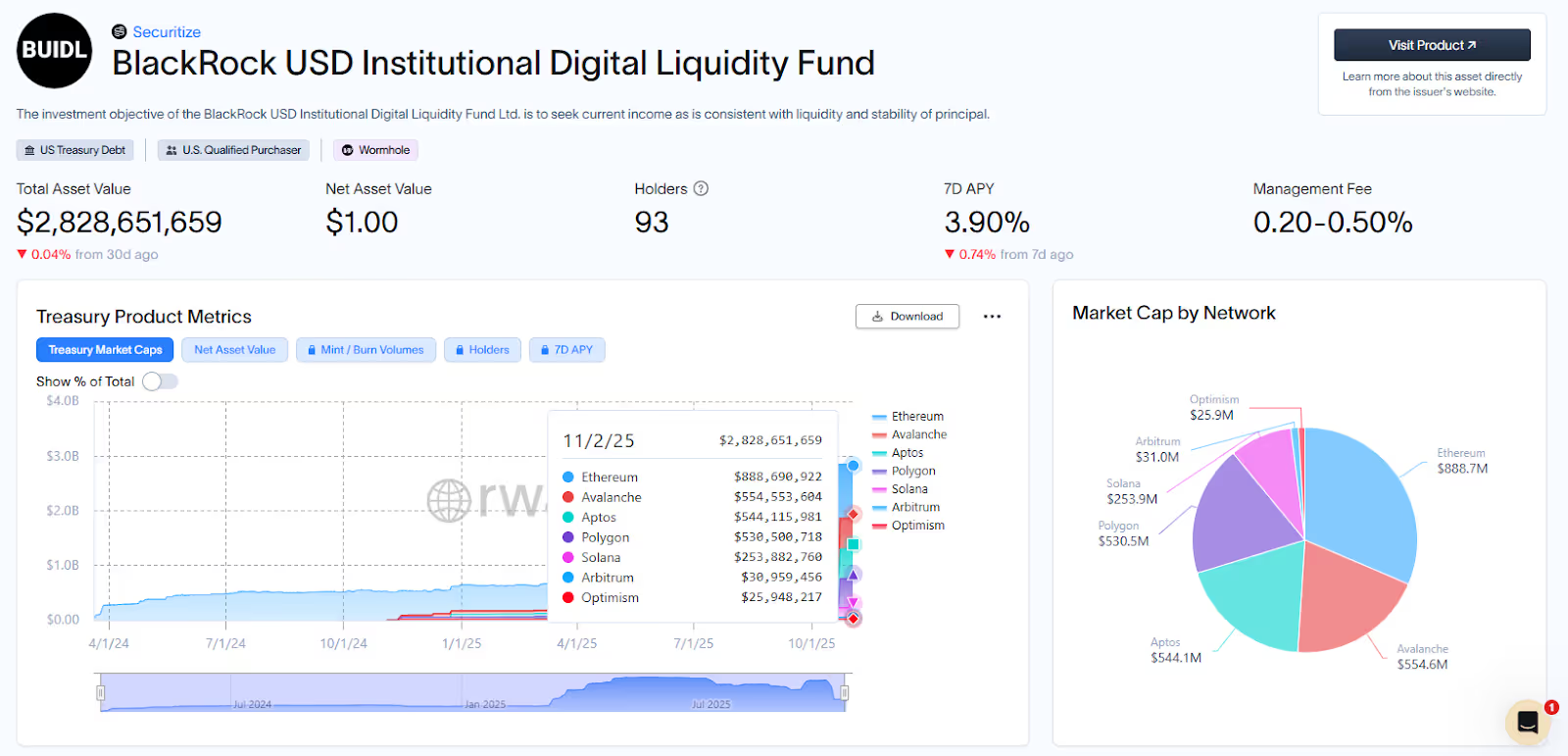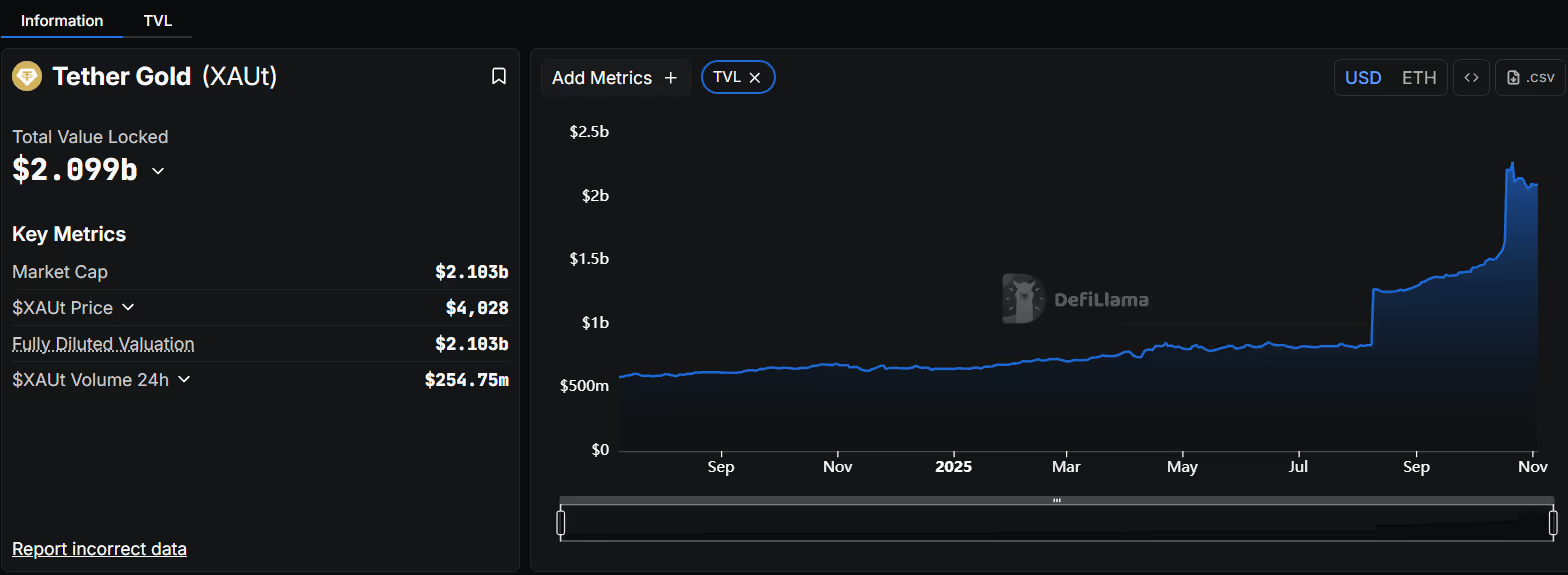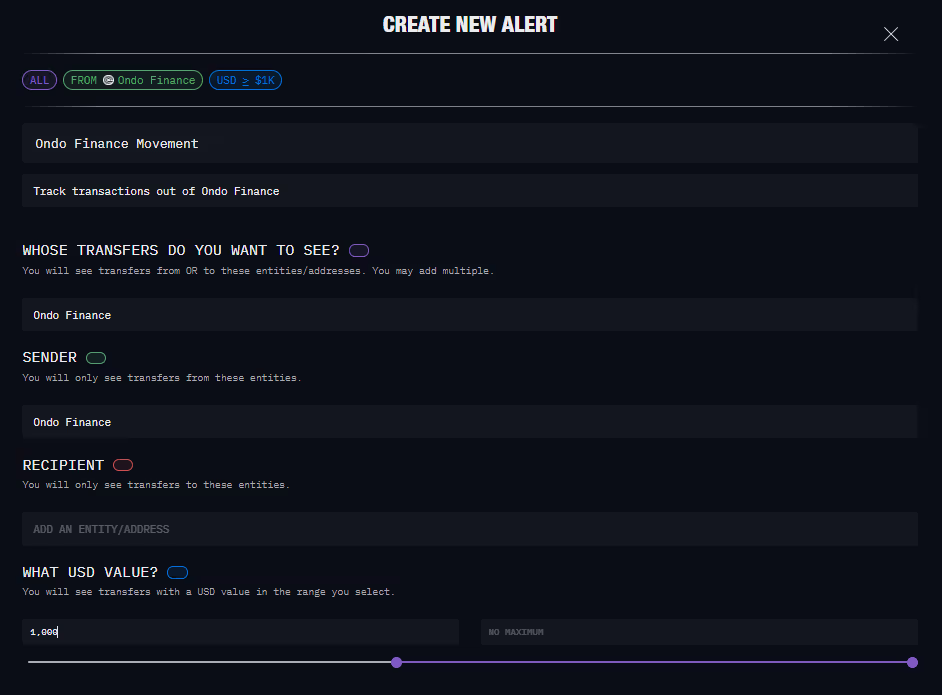December 10, 2025
at
11:00 am
EST
MIN READ
RWA Tokenization: How To Understand And Track Real-World Assets On-Chain
.avif)
Real-world assets (RWAs) refer to tangible or off-chain assets, such as treasury bills, real estate, or commodities, that are tokenized and represented on the blockchain. As capital markets increasingly converge with decentralized finance (DeFi), RWAs have become one of the fastest-growing sectors in crypto, bridging traditional yield and on-chain liquidity.
Understanding and tracking RWAs involves monitoring key issuers, protocols, and yield trends across tokenized instruments, helping investors evaluate where real-world value is flowing into the blockchain economy.
Summary
- RWAs are shaping the next phase of DeFi, bringing real-world value, stability, and yield on-chain while bridging traditional finance with blockchain infrastructure.
- Tokenization is redefining asset ownership and trading, turning traditional investments like Treasuries and commodities into programmable, globally accessible tokens.
- Stablecoins and tokenized Treasuries prove the model’s success, showing that trusted, yield-bearing RWAs can scale to billions and support broader on-chain finance.
- As RWA activity spreads across chains, from Ethereum to newer networks like Polymesh and Plume, the adoption of RWAs continues to hinge on regulation, trust, and institutional integration.
What is an RWA?
A real-world asset (RWA) is any physical or traditional financial asset, such as government bonds, stocks, corporate debt, real estate, commodities, or even invoices, that is represented digitally on a blockchain through a process known as tokenization. In essence, an RWA bridges the gap between off-chain value and on-chain infrastructure, allowing assets that traditionally exist within legacy financial systems to be traded, collateralized, or settled through decentralized networks. Each tokenized asset is backed by a verifiable claim to the underlying real-world instrument, often issued and maintained by regulated entities or special purpose vehicles (SPVs) that ensure legal and custodial compliance.
The growing relevance of RWAs stems from their ability to introduce stable, yield-bearing instruments into the volatile crypto ecosystem. As DeFi matures, protocols and investors are increasingly seeking sources of real-world yield, such as US Treasury bills or money market funds, to diversify exposure and improve capital efficiency on idle funds. By tokenizing these instruments, issuers can make traditionally illiquid or institution-only assets accessible to a global on-chain audience, while offering near-instant settlement and transparent ownership tracking.

Beyond the common use case of US Treasuries and money market funds, the world of RWAs has also expanded further into new and unconventional categories. Some projects are tokenizing private credit, enabling small and medium-sized businesses to access global capital through on-chain financing backed by invoices or revenue streams. Others are experimenting with tokenized royalties from music, film, or intellectual property, enabling holders to receive a share of the underlying cash flows as the asset generates income. Carbon credits and renewable energy certificates have also emerged as a growing RWA class, offering on-chain transparency and traceability in climate-related markets that are often opaque and suffer from accountability issues.
In the commodities space, tokenized gold, oil reserves, and agricultural goods are making traditional stores of value and trade assets more accessible and liquid. On the institutional front, some governments and banks are exploring tokenized deposits or sovereign bonds as part of their broader digital asset strategies, signaling how deeply tokenization affects how institutions and governments think about financial infrastructure.

RWAs also serve a broader structural purpose as they connect DeFi’s programmable architecture with the credibility and scale of traditional finance. This convergence allows for more efficient credit markets, transparent reporting, and innovative forms of collateralization that blend on-chain composability with off-chain stability.
That said, RWAs still rely heavily on trust frameworks between issuers, auditors, and custodians to maintain the integrity of the link between token and asset. In practice, understanding RWAs means evaluating not just what the token represents, but who guarantees its backing and how it’s managed.
What is Tokenization?
Tokenization is the process of converting ownership rights of an asset, whether physical, financial, or intangible, into a digital token that exists on a blockchain. Each token acts as a verifiable representation of a specific claim, fraction, or share of the specified underlying asset. This concept extends beyond cryptocurrencies: while Bitcoin represents a native digital asset, tokenization enables traditional assets such as real estate, equities, bonds, art, or even carbon credits to be brought on-chain, unlocking programmability, transparency, and liquidity within decentralized systems.
At its core, tokenization transforms how assets are created, traded, and managed. By encoding ownership and transfer rules directly into smart contracts, blockchains allow these tokens to move frictionlessly between parties without the need for traditional intermediaries like brokers or clearinghouses. This reduces settlement times from days to seconds and lowers transaction costs significantly. It also enables fractional ownership, allowing investors to hold and trade small portions of high-value assets that were previously out of reach, such as fractional ownership of commercial properties or high-value art pieces.
Significance of RWA Tokenization
The significance of RWA tokenization lies in its potential to fundamentally bridge the gap between traditional finance and decentralized systems. By bringing real-world value on-chain, tokenization enables blockchain networks to host assets that are regulated, generally less volatile and oftentimes yield-bearing, qualities that the crypto ecosystem has long sought to replicate synthetically. This connection allows DeFi to evolve from speculative activity into a more mature, utility-driven ecosystem that directly interacts with global capital markets. Tokenized RWAs inject credibility, liquidity, and real economic backing into on-chain protocols, while giving traditional institutions new ways to issue, trade, and manage assets with the efficiency of blockchain infrastructure.
For investors and protocols alike, RWA tokenization offers a new layer of composability, enabling real-world instruments to be utilized in smart contracts, lending markets, or automated strategies without losing their regulatory and financial grounding. It transforms static, opaque assets into programmable components of an open financial system, unlocking transparency and interoperability that legacy finance cannot easily match. At the same time, it enables issuers to tap into a global, 24/7 liquidity pool and reach a broader investor base unconstrained by geography or intermediaries.
Top Tokenized RWAs
US Treasuries are the centerpiece of the RWA movement, driving the initial wave of tokenized RWA adoption as an easy-to-understand and attractive use case for traditional finance participants and institutions. Protocols such as Ondo Finance, Maple, and Superstate have brought tokenized Treasury products on-chain, offering investors regulated exposure to short-term government debt with transparent, yield-bearing tokens. Traditional finance heavyweights have also entered the space with their own offerings, including Franklin Templeton’s BENJI fund and BlackRock’s BUIDL fund, which together manage over $2.65B in assets.
BUIDL, which you can track on the Arkham Intel Platform, is a tokenized money market fund that is available only to approved institutional investors. It has a minimum investment of $5 million. The fund works by investing in safe liquid instruments like cash, U.S. Treasury bills and repurchase agreements and each token is pegged to $1. Although it sounds exactly like a stablecoin, it differs from stablecoins as it automatically generates daily yield. For example, if you hold 1,000,000 BUIDL tokens and the annual yield is 5%, you might receive roughly ~4,166 additional BUIDL tokens at the end of the month, directly into your wallet.
Whilst stablecoins can generate yield, holders must use a third party to get it whereas BUIDL does it for you.

Tokenized equities are also gaining traction, though still constrained by regulatory frameworks, allowing investors to gain synthetic or fully backed exposure to public company shares on-chain. Trading platforms such as Ostium, Gains Network and trade.xyz are already offering a limited selection of stocks and stock indices for trading on-chain. Some projects, such as Republic, are also exploring tokenized private equity, enabling retail investors to access investments in highly sought-after companies like OpenAI, SpaceX, Anthropic and more.
Among the leading categories of tokenized RWAs, gold remains one of the most established and trusted. Tokenized gold, such as PAX Gold (PAXG) or Tether Gold (XAUT), offers investors the security of owning fully backed physical bullion while enjoying the liquidity and portability of digital assets. Together, PAXG and XAUT have onboarded more than $3.1B worth of gold on-chain.

Similarly, oil and other commodities are beginning to see tokenized representations, allowing exposure to traditionally hard-to-access markets through fractional, on-chain ownership. These instruments enable traders to interact with global commodity markets in real time, bypassing intermediaries and geographic restrictions that have long limited retail participation.
Looking from a different perspective, stablecoins can also be viewed as an early and dominant form of RWA tokenization. Dominant stablecoins like USDC and USDT are backed by real-world reserves, primarily short-term Treasuries and cash equivalents, and represent the most liquid and widely used bridge between traditional finance and the blockchain economy. In many ways, stablecoins laid the groundwork for today’s RWA ecosystem, demonstrating how on-chain representations of off-chain assets can achieve global scale, trust, and utility. In 2025 alone, the rise in institutional interest in RWAs pushed the global stablecoin market cap up by 50% to over $300B.

Top Chains for Tokenized RWAs
When it comes to hosting tokenized RWAs, a handful of blockchains have emerged as leading infrastructure hubs. Ethereum remains the dominant platform, favored for its security, liquidity, and mature DeFi ecosystem that supports most institutional-grade RWA issuers.
However, newer chains like Solana and Avalanche are also gaining traction for their lower fees and scalability, making them attractive for tokenized assets that require frequent transactions or retail accessibility.
More recently, new chains like Plume Network and Polymesh have also emerged, specializing in RWAs and tokenization. While these networks are purpose-built to address compliance, asset issuance, and institutional integration, they remain relatively young and unproven compared to their more-established counterparts.
This multi-chain expansion underscores how tokenized real-world assets are not confined to a single ecosystem but are becoming an integral layer across both public and enterprise-grade blockchains, each optimized for different levels of compliance, speed, and interoperability.
The Canton Network
The Canton blockchain is a purpose-built bridge designed for financial institutions to execute atomic transactions across disparate networks. Canton creates a unified ecosystem for institutions where liquidity can flow freely between regulated assets. For example, if you have $100,000 in a bank, and you want to buy a tokenized treasury bond from another bank, rather than wiring money from the first bank to the second, waiting for the ledgers to be updated and then waiting for the tokenized bond to be sent over, Canton allows the bank's two ledgers to atomically settle on-chain using a smart contract.
According to RWA.xyz, Canton has secured $380 billion in value for its tokenized repurchase agreements. RWA.xyz defines this value as 'Represented' which means it cannot be issued to wallets outside the issuing platform and it cannot be transferred between wallets.
Track RWAs on Arkham
RWAs and their issuers can easily be tracked on Arkham Intel if they have been identified.
- Begin by searching the token or protocol you wish to track, for example: “Blackrock USD Institutional Digital Liquidity Fund (BUIDL)” or “Ondo Finance”

- Explore recent transactions made by protocols and tokens held by RWA issuers.

- Users can also set alerts via Arkham to receive real-time notifications on fund movements to and from RWA or tokenization protocols they wish to track. Filters can be used to narrow down to specific assets, transaction values, chains and entities.

Conclusion
The rise of RWA tokenization marks a pivotal step in the evolution of DeFi. By bridging the efficiency of blockchain with the credibility of traditional assets, RWAs are transforming how capital moves, yields are generated, and value is stored. What began with stablecoins and tokenized Treasuries has expanded into a diverse ecosystem spanning commodities, credit, and even intellectual property, each bringing real-world utility to the on-chain economy.
As institutions, issuers, and investors continue to experiment with tokenized markets, the lines between DeFi and traditional finance will blur further, giving rise to a more open, transparent, and programmable financial system. While regulatory and custodial challenges remain, the momentum is clear: RWAs are not just another crypto narrative, they are the foundation for a more connected and efficient global market infrastructure.





















































































































































































































































.png)